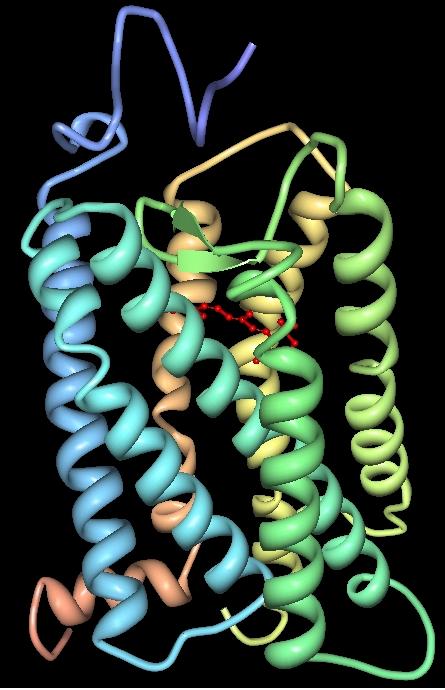University of California Riverside reports:
Light-capturing proteins illuminate Earth of billions of years ago.
Scientists have reconstructed what life was like for some of Earth’s earliest organisms by using light-capturing proteins in living microbes. These endeavors could help us recognize signs of alien life on other planets, whose atmospheres may more closely resemble our early, pre-oxygen planet.
The earliest living things on Earth, which included bacteria and single-celled organisms called archaea, inhabited a primarily oceanic planet without an ozone layer to protect them from the sun’s radiation. These microbes evolved rhodopsins, proteins with the ability to turn sunlight into energy, and used them to power cellular processes.
“On early Earth, energy may have been very scarce. Bacteria and archaea figured out how to use the plentiful energy from the sun without the complex biomolecules required for photosynthesis,” said Edward Schwieterman, a University of California, Riverside astrobiologist and co-author of a study describing the research.
Rhodopsins are related to rods and cones in human eyes that enable us to distinguish between light and dark and see colors. They are also widely distributed among modern organisms and environments such as saltern ponds, which present a rainbow of vibrant colors.
Using a type of artificial intelligence called machine learning, the team of scientists analyzed rhodopsin protein sequences from all over the world and tracked how they evolved over time. Then, they created a type of family tree that allowed them to reconstruct rhodopsins from 2.5 to 4 billion years ago, and the conditions that they likely faced.
“Life as we know it is as much an expression of the conditions on our planet as it is of life itself. We resurrected ancient DNA sequences of one molecule, and it allowed us to link to the biology and environment of the past,” said University of Wisconsin-Madison astrobiologist and study lead Betul Kacar.
Since ancient Earth did not yet have the benefit of an ozone layer, the research team theorizes that billions-of-years-old microbes lived many meters down in the water column to shield themselves from intense UVB radiation at the surface.
Blue and green light best penetrates water, so it is likely that the earliest rhodopsins primarily absorbed these colors. “This could be the best combination of being shielded and still being able to absorb light for energy,” Schwieterman said.
After the Great Oxidation Event, more than 2 billion years ago, Earth’s atmosphere began to experience a rise in the amount of oxygen. With additional oxygen and ozone in the atmosphere, rhodopsins evolved to absorb additional colors of light.
Rhodopsins today are able to absorb colors of light that chlorophyll pigments in plants cannot. Though they represent completely unrelated and independent light capture mechanisms, they absorb complementary areas of the spectrum.
“This suggests co-evolution, in that one group of organisms is exploiting light not absorbed by the other,” Schwieterman said. “This could have been because rhodopsins developed first and screened out the green light, so chlorophylls later developed to absorb the rest. Or it could have happened the other way around.”
“Early Earth is an alien environment compared to our world today. Understanding how organisms here have changed with time and in different environments is going to teach us crucial things about how to search for and recognize life elsewhere,” Schwieterman said.
Full article at SciTech Daily.
The researchers calmly state: “These microbes evolved rhodopsins, proteins with the ability to turn sunlight into energy, and used them to power cellular processes.” How could unguided natural processes produce a complex, functional protein consisting of a specific sequence of 348 amino acids? The probabilistic resources of the entire universe render impossible the production of a single protein with only 150 amino acids in a specified sequence by chance. See Signature in the Cell, by Stephen Meyer.
